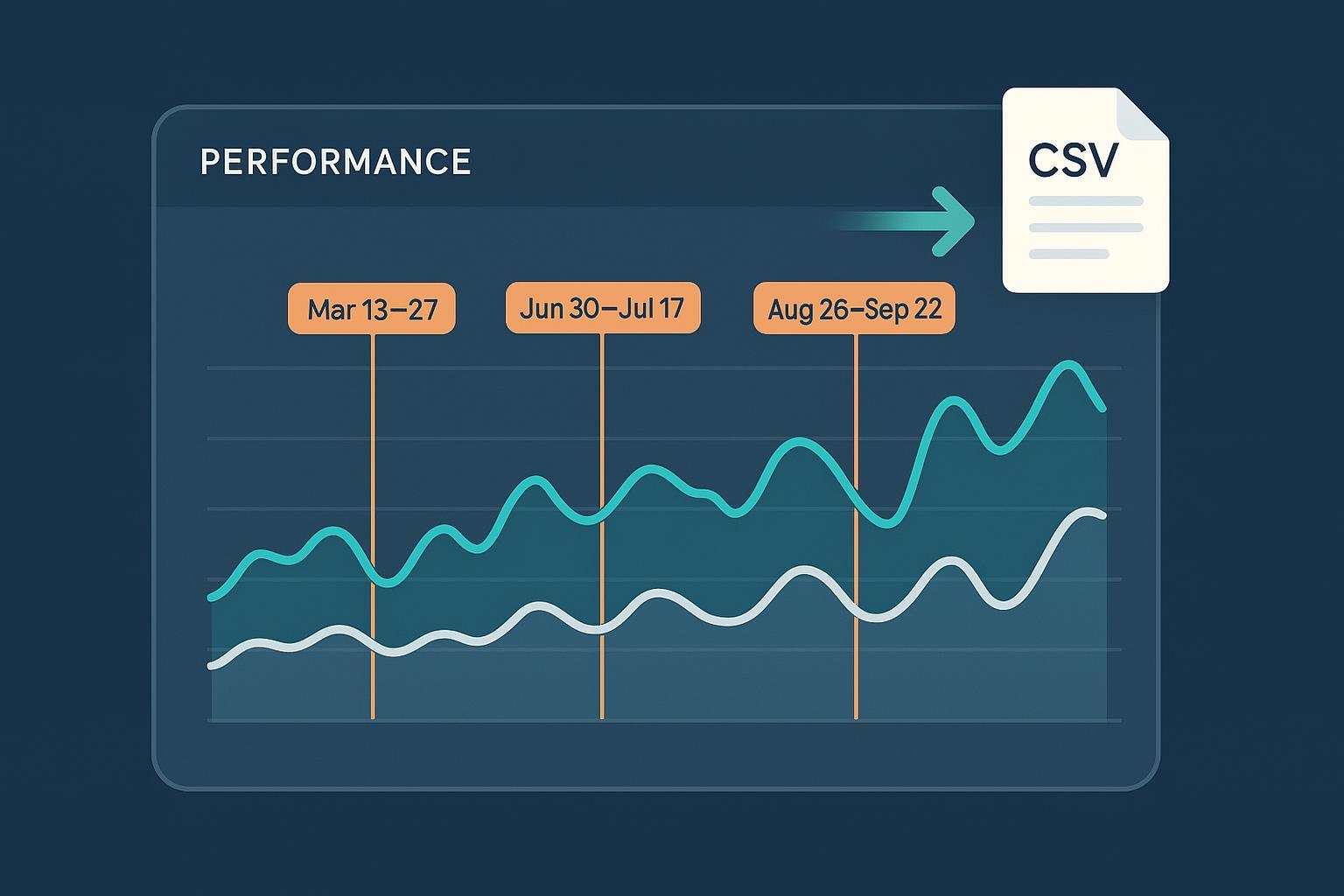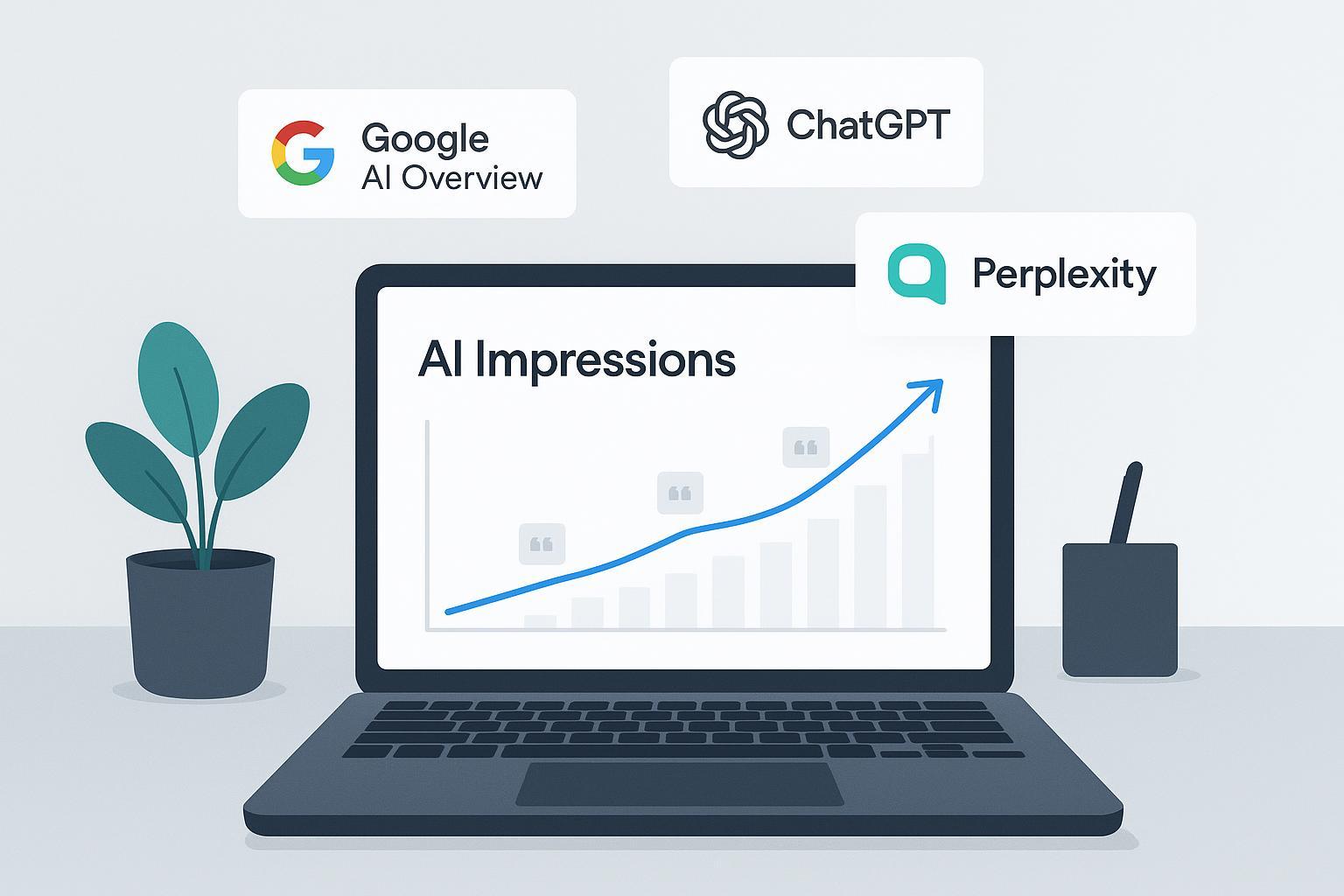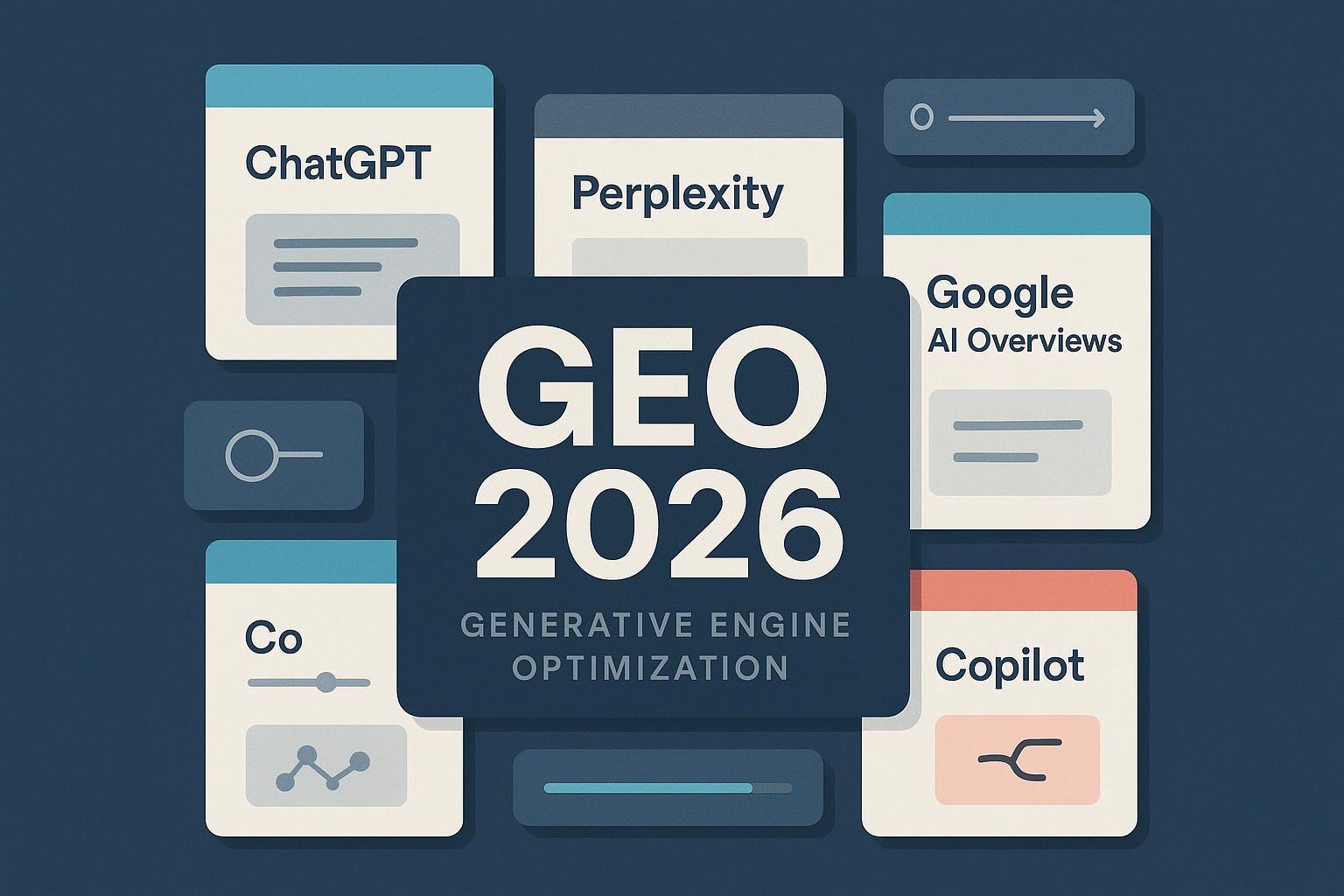Best Practices: Bulk Tracking Google Algorithm Updates with GSC Guardian (2025)
Comprehensive 2025 guide for SEOs & agencies: bulk-track Google algorithm updates in GSC with GSC Guardian, master annotation workflows, SOPs, and QA for multi-site monitoring.


Why bulk annotation matters in 2025
If you manage multiple sites or clients, you’ve felt the acceleration: multi-week core updates, overlapping spam updates, and secondary turbulence that continues well after “completion.” Without disciplined, portfolio-wide annotations inside Google Search Console (GSC), teams misattribute drops to deploys, miss recoveries, or waste hours reconciling timelines.
In 2025, confirmed rollouts like the June core update, which ran from June 30 to July 17, showed pronounced volatility across sectors, with data providers classifying it as materially impactful. See the completion report by Search Engine Land (2025) in “Google June 2025 core update rollout is now complete” and their summary of provider analyses in “Data providers: June 2025 core update was a big update.” Those dates and context should anchor your annotation windows, not single-day pins.
What to track (and the windows that matter)
Foundational practice:
- Record both the official start and completion dates for each Google-confirmed event.
- Inspect daily granularity across GSC’s core metrics: Clicks, Impressions, Average Position, and CTR.
- Analyze in rolling windows: typically 2–4 weeks after start, plus 2–4 weeks after completion, to catch lagging effects and false stabilizations.
- Separate algorithm events from internal changes. Treat migrations, major deploys, and content releases as distinct annotations and tags.
Authoritative references you should use when building your calendar:
- The Google Search Status Dashboard incident pages list confirmed start and end dates for core and spam updates; for example, the June 2025 core incident page documents the rollout window (Google, 2025) in the Search Status incident entry for June 2025, and the August 2025 spam incident page provides the timeframe (Google, 2025) in the Search Status incident entry for August 2025.
- Google’s general guidance on core updates emphasizes focusing on content quality and user-first relevance rather than attempting tactical reversals; see the Google Search Central core updates overview (2025).
Tooling brief: what GSC Guardian adds
GSC Guardian is a Chrome extension that overlays Google-confirmed update markers and lets you add your own annotations directly on GSC performance charts. As of v2.9 (July 2025), it introduced bulk CSV import, making it feasible to migrate and share historical annotations at scale.
- Official capabilities and versioning are outlined in the Chrome Web Store listing (v2.9, 2025).
- The developer site confirms bulk CSV import and a preview-before-import workflow; see Node & Link’s GSC Guardian page (2025).
- A succinct feature update recap is available in PPC Land’s coverage: “GSC Guardian adds bulk CSV import for algorithm tracking” (2025).
Important boundaries:
- It’s a client-side overlay working within GSC’s UI; it does not modify GSC data itself.
- The CSV schema is provided via the extension’s own template. Don’t guess column names—download the official template inside the extension UI and map your sheet accordingly.
End-to-end bulk workflow
This is the operational backbone used by teams managing dozens of properties. Adapt it to your context, but keep the sequencing.
1) Build your master calendar
- Pull confirmed update events for the year and standardize their labels. Example: “2025-06-30 Core Update (Start)” and “2025-07-17 Core Update (Complete).”
- Maintain a separate track for internal events (migrations, deploys, content releases). Use tags to distinguish causes (Algo-Core, Algo-Spam, Tech-Migration, Tech-Deploy, Content-Release).
- Decide property-level applicability. Some algorithm impacts are section-specific; that’s fine—standardize labels even if impact varies.
2) Prepare the CSV for bulk import
Guidelines that have worked reliably:
- Use ISO date format (YYYY-MM-DD) and ensure alignment with the dates published by Google’s status entries.
- Annotate windows rather than single points for multi-week rollouts by including a “Start” and a “Complete” row.
- Keep concise, descriptive titles; move nuance to the description field.
Example structure to copy and adapt to the official template you download in the extension:
# Note: Replace headers to match the extension's official CSV template exactly.
Date,Title,Type,Tag,Description
2025-06-30,June 2025 Core Update (Start),Algorithm,Algo-Core,"Google-confirmed core update begins; monitor Clicks/Impressions/Position daily."
2025-07-17,June 2025 Core Update (Complete),Algorithm,Algo-Core,"Rollout completed; evaluate 2–4 weeks post and compare to pre-update baseline."
2025-08-26,August 2025 Spam Update (Start),Algorithm,Algo-Spam,"Spam update starts; segment by page type to isolate cause."
2025-09-22,August 2025 Spam Update (Complete),Algorithm,Algo-Spam,"Completion; assess impacted directories and recovery patterns."
2025-07-05,Site Migration (Phase 1),Internal,Tech-Migration,"URL structure changes deployed; track separately from algorithm events."
Validation steps:
- Use the extension’s preview to catch column or date-format errors.
- If you manage a portfolio, split CSVs by property or by quarter to reduce import risk.
3) Import and assign
- Open GSC, load the property, and trigger GSC Guardian’s bulk CSV import.
- Use the preview screen to confirm property association and scan for validation warnings.
- Proceed with import only after you verify a random sample aligns on chart dates.
4) Post-import QA
- Sample 10–20% of annotations across each rollout, verifying placement on Clicks, Impressions, CTR, and Position charts.
- Toggle filters (country/device/search type) to ensure annotations remain visible as expected.
- If an annotation doesn’t show, check the extension’s filters and property bindings before re-importing.
5) Versioning and governance
- Keep a versioned master CSV per property with owner and change log.
- Adopt a monthly review cadence. After each update completion, produce a standardized report pack.
Portfolio/team SOP for scale
When multiple stakeholders touch data, friction compounds quickly. A simple SOP reduces rework.
Roles:
- Owner (portfolio lead): maintains the calendar and conventions.
- Annotator (data ops): prepares/imports CSVs, runs QA.
- Reviewer (SEO lead): validates impact assessments and report narratives.
- Reporter (stakeholder comms): compiles executive summaries and distributes.
Conventions:
- Dates in YYYY-MM-DD; standardized labels for update type and rollout phase.
- Tags as noted above; reserve distinct color coding for algorithm vs internal events.
- Keep algorithm and technical annotations separate to avoid causal conflation.
- After a core update completes, assemble side-by-side GSC charts for key markets/devices and summarize delta vs baseline and recovery patterns.
- Track severity across the portfolio with a simple tally: properties affected, sections impacted, and magnitude of change.
Correlating annotations with performance (without fooling yourself)
Causality takes discipline. Here’s the process that consistently avoids misreads:
- Segment by page type and directory. Identify sections disproportionately affected.
- Use control cohorts: stable pages or segments that historically move less. If they shift materially during the window, the cause is likely systemic.
- Compare pre/post windows around the update. For core updates, evaluate at least 2–4 weeks post-start and 2–4 weeks post-completion.
- Guard against seasonality: compare similar seasonal periods year-over-year when relevant.
- Cross-reference external signals: GA4 conversions, rank trackers, and crawl logs for anomalies.
For context, industry analyses of the June 2025 core update describe “two waves” and above-average volatility versus March, reinforcing the need to annotate and review windows rather than single-day conclusions; see Sistrix’s June 2025 core update analysis (2025) and the SEL data-provider roundup noted earlier.
Common pitfalls and how to fix them
- Date or timezone mismatches: If lines appear misaligned, verify your CSV dates against Google’s incident entries and ensure consistent formatting.
- Missing annotations: Check extension filters and property bindings; reimport only after preview validation.
- Over-attribution to algorithms: If you shipped a migration or content release in the same window, treat it as a separate annotation and analyze segments independently.
- Scaling headaches: Don’t try to import a year’s worth of annotations across all properties in one file. Chunk by property or by quarter.
- Tag sprawl: Limit tag sets to 5–6 canonical options. More tags increase confusion and reduce reporting clarity.
Quickstart: 30-minute rollout plan
- Download the official CSV template from GSC Guardian’s UI.
- Add four rows for the current year’s confirmed events: start and complete for the latest core and spam updates.
- Add two internal events you know affected performance (e.g., migration, major content release).
- Import with preview, fix validation issues, and commit.
- Run a 10% QA sample across Clicks/Impressions/CTR/Position charts.
- Produce a short report with side-by-side charts for one key market and device.
Extended monitoring and workflow sidebar
If your remit spans AI surfaces beyond traditional web search, you’ll likely want a companion system to track brand visibility across generative engines and centralize team workflows. Consider consolidating AI search mentions, sentiment, and historical queries alongside your GSC annotations in a shared workspace for ops visibility. See Geneo for a practical overview of multi-platform visibility tracking and collaboration.
Disclosure: Geneo is our product.
Alternative tools and visualizers (context only)
- Semrush: robust historical timelines for rankings and visibility that help contextualize GSC trends; see the Semrush historical data documentation (n.d.).
- Advanced GSC visualizers: third-party overlays can assist, but stability varies by GSC UI changes. Evaluate on a property-by-property basis.
When to revisit your annotations
- After any confirmed update completes.
- After major internal changes (migrations, large-scale content deploys).
- At the end of each quarter, to roll learnings into SOP updates and tag conventions.
Final notes on timeliness and maintenance
- Google’s core and spam systems evolve. Keep your calendar current using the Search Status Dashboard and Google Search Central’s guidance. Don’t overreact to short-term turbulence; annotate, evaluate in windows, and adjust based on segment-level evidence.
- When the extension ships updates (e.g., CSV import improvements or visualization tweaks), re-run your QA checklist on a small subset before scaling.
Reference anchors you should have on hand
- Official incident entries for 2025 updates: June 2025 core incident (Google, 2025) and August 2025 spam incident (Google, 2025).
- Core updates guidance: Google Search Central core updates overview (2025).
- June 2025 completion and impact analysis: Search Engine Land completion report (2025) and data providers roundup (2025).
- GSC Guardian capabilities: Chrome Web Store listing (v2.9, 2025) and developer site overview (2025).





